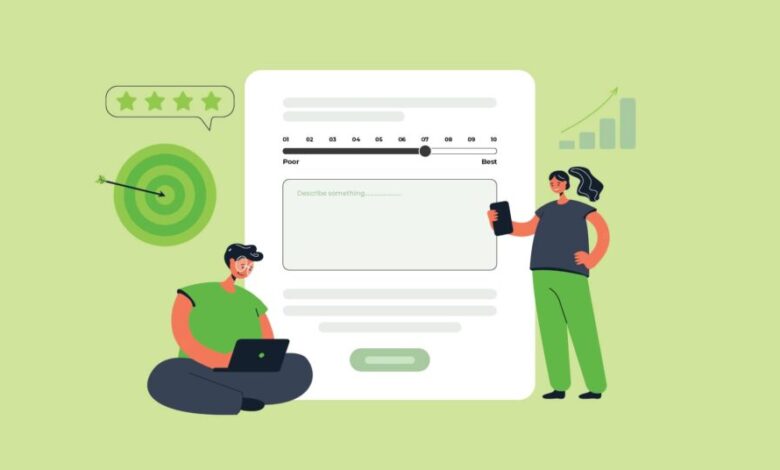The Evolution of Customer Feedback: Strategies for Engaging Surveys in the Digital Age

Table of Contents:
- Understanding Customer Feedback and Its Importance
- A Historical Perspective of Customer Surveys
- Crafting Effective Survey Questions
- The Role of Technology in Modern Surveys
- Enhancing Response Rates and Participation
- Data Privacy and Ethical Considerations
- Making Sense of Survey Data
- Case Studies of Successful Survey Strategies
- Challenges and Solutions in Customer Feedback Collection
- The Future of Customer Feedback Collection
Key Takeaways:
- Customer feedback is a fundamental aspect of business strategy and growth.
- The transition from traditional to digital tools, such as free survey makers, has revolutionized survey dissemination and data collection.
- Question design is critical in obtaining valuable and accurate customer data.
- Adopting new technologies can enhance the collection and analysis of customer feedback.
- Ensuring high customer engagement with surveys can lead to more significant insights and business development.
Understanding Customer Feedback and Its Importance
Understanding the customer experience is a vital factor in creating successful business strategies. Customer feedback is a direct line to the consumer’s thoughts and needs, offering businesses a clear view of what works well and requires improvement. In today’s digital landscape, using platforms like a free survey maker is a straightforward way to gather this vital information. Capturing real-time reactions and opinions helps companies pivot quickly, aligning their operations with the ever-changing market demands. This type of agility underpins the reasons customer feedback is valued as one of the most significant drivers of business innovation and customer-centric decision-making.
A Historical Perspective of Customer Surveys
The history of customer surveys is deeply rooted in the development of market research. Initially, businesses relied on face-to-face interactions and paper forms to gather customer opinions. This method could have been more convenient and more accessible. However, the digital revolution brought a paradigm shift, which made it possible for businesses to use online surveys to interact with customers worldwide. Moreover, the digital transition was about more than just reach; it enabled speed and efficiency previously unattainable. Online surveys, facilitated by tools like a free survey maker, can be distributed at scale and analyzed rapidly, allowing businesses to act on feedback more quickly than ever.
Crafting Effective Survey Questions
One of the most fundamental elements of a successful survey is the design of the questions. Crafting concise and clear questions yet comprehensive enough to extract detailed information is an art form. This involves avoiding leading questions that may bias the respondent and framing questions in a way that elicits honest and thoughtful responses. There is an intriguing interplay between psychology and survey design. Properly structured surveys can minimize abandonment rates and enhance the quality of the feedback received, ultimately providing more actionable insights that can influence strategic decisions.
The Role of Technology in Modern Surveys
Technology has reshaped survey methods and, by extension, customer feedback collection. Contemporary survey tools offer many features, from advanced targeting to automated analytics, that can significantly streamline the feedback process. Integrating survey platforms with other systems like CRM also facilitates a more holistic view of customer behaviors and preferences. This integration is not only about improving efficiency but also about enriching the quality of customer profiles. Accurate and robust data sets from high-quality feedback enable businesses to tailor experiences and offerings to meet individual customer needs more closely.
Enhancing Response Rates and Participation
Garnering high response rates is a common challenge in the realm of surveys. To tackle this, companies must adopt strategies that capture the interest and commitment of participants. One approach is personalization; addressing the respondent by name or tailoring questions based on prior interactions can make the survey more relevant to the recipient. Timing is another critical factor. Sending surveys when customers are most likely to be engaged—such as shortly after a purchase or interaction—increases the likelihood of response. Furthermore, incentivizing participation through discounts, loyalty points, or entries into gift draws can significantly boost engagement.
Data Privacy and Ethical Considerations
In our data-driven world, concerns about privacy and the ethical use of information are paramount. Transparent communication about how data will be used and ensuring compliance with regulations like GDPR build trust with customers. Trust is a currency and crucial for a sustained customer relationship. An ethical approach to handling and storing customer feedback, respecting anonymity where requested, and securing data against unauthorized access are all non-negotiable aspects of modern survey practices.
Making Sense of Survey Data
After collecting feedback, the focus shifts to data analysis. Techniques such as thematic analysis, sentiment analysis, and trend tracking can turn many responses into tangible action plans. It’s about discerning patterns and translating them into insights that can lead to meaningful changes.
Utilizing digital platforms allows businesses to gather insightful feedback, empowering them to continually improve their products and services to meet customer expectations effectively.
Case Studies of Successful Survey Strategies
Examining case studies offers a glimpse into the successes and learnings from others’ experiences. Some companies have mastered the art of survey engagement, resulting in high response rates and quality feedback. For example, businesses segmented their customer base and targeted surveys based on specific criteria such as past behavior, demographics, or purchase history often see more pertinent responses. These successful strategies underscore the importance of understanding the audience and customizing the survey experience to fit their preferences and behaviors.
Challenges and Solutions in Customer Feedback Collection
Despite the availability of advanced tools, businesses still need to help to garner meaningful customer feedback. Response bias, survey fatigue, and low engagement levels are typical issues. Solutions include:
- They are developing a multi-channel approach to reach customers where they are most comfortable.
- We are optimizing the survey’s length and structure to respect the respondent’s time.
- I am using clear language that resonates with the audience.
By addressing these challenges head-on, businesses can enhance the reliability and utility of the feedback they gather.
The Future of Customer Feedback Collection
The field of consumer feedback is anticipated to continue to change as machine learning and artificial intelligence develop. Predictive analytics will likely play a more significant role in understanding customer behaviors and preferences, leading to proactive rather than reactive business strategies. Integrating feedback tools with other tech stacks will become more seamless, enabling richer data synthesis and personalized customer experiences. For organizations hoping to achieve the highest levels of customer satisfaction, staying on top of these trends and coming up with new ideas for gathering feedback will be essential.




